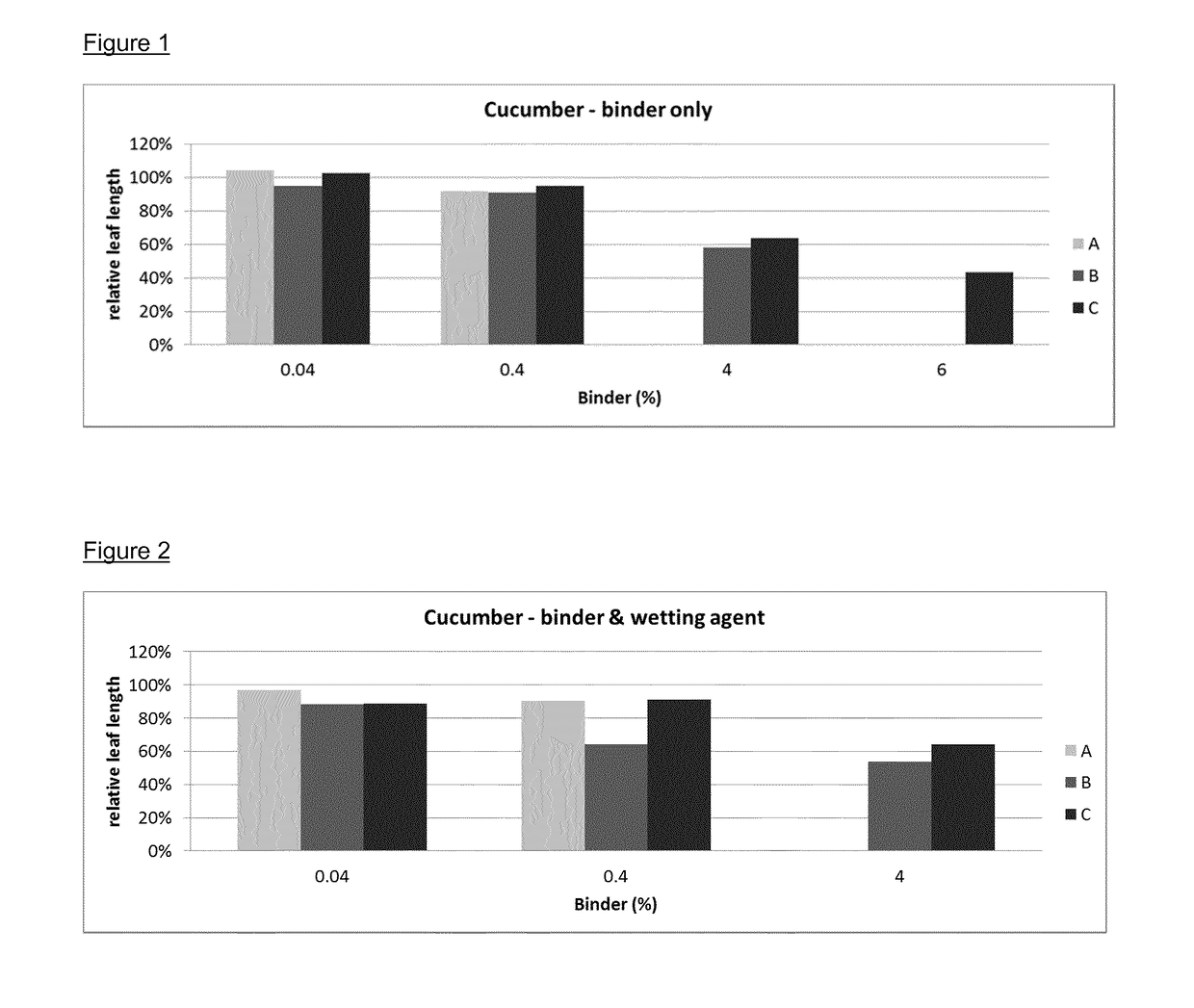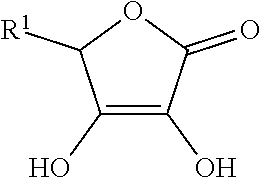Growth substrate product
a substrate and coherent technology, applied in the field of coherent growth substrate products, can solve the problems of affecting the growth and development of plants, the negative effects of formaldehyde binders, and the negative effects of phytotoxicity of use of formaldehyde-containing binders, so as to reduce or eliminate formaldehyde emissions, good mechanical strength, and low phytotoxicity
- Summary
- Abstract
- Description
- Claims
- Application Information
AI Technical Summary
Benefits of technology
Problems solved by technology
Method used
Image
Examples
example 1
[0192]The synthesis of binders according to the present invention and known binder compositions was carried out as follows;
Binder A (Reference Binder)
[0193]A phenol-formaldehyde resin modified with urea, a PUF-resol, was prepared. This binder is similar to known formaldehyde binder compositions from the prior art. A phenol-formaldehyde resin was prepared by reacting 37% aq. formaldehyde (606 g) and phenol (189 g) in the presence of 46% aq. potassium hydroxide (25.5 g) at a reaction temperature of 84° C. preceded by a heating rate of approximately 1° C. per minute. The reaction was continued at 84° C. until the acid tolerance of the resin was 4 and most of the phenol was converted. Urea (241 g) was then added and the mixture was cooled.
[0194]Using the urea-modified phenol-formaldehyde resin obtained, a binder was made by addition of 25% aq. ammonia (90 mL) and ammonium sulfate (13.2 g) followed by water (1.30 kg).
[0195]For binder mixes containing a wetting agent, the required amount ...
example 2
[0203]Various properties of the above described binder compositions were investigated, including curing onset, curing endset, reaction loss and water absorption. The results are shown in Tables 1 and 2 below. In Table 1, Reference Binders A1-A4 were prepared as described above for Binder A, and Reference Binders B1-B4 were prepared as described for Binder B. In Table 2, New Binders C1-C4 were prepared as described above for Binder C.
TABLE 1Reference BindersReference bindersReference bindersExampleA1A2A3A4B1B2B3B4Wetting agent (%-wt. added) [a]Rewopal—10.0———10.0——LAS——4.8———4.8—SLES———5.4———5.4Silane (% of binder solids) [b]0.50.50.50.5————Binder propertiesCuring onset (° C.)150150158156180177182185Curing endset (° C.)171171175173210211216218Reaction loss (%)2932323429323232pH of 15% soln.9.6969.69.55.85.95.95.9Water absorption propertiesWater absorption, 30 sec vertical (%)2429232223638Water absorption, 1 min submerged (%)71337483155050Water absorption, 24 h submerged (%)2836385033...
example 3
[0223]A plant phytotoxicity test was undertaken in order to investigate the effect of binders as defined according to the present invention on plant growth (Binder C). Known binders, phenol urea formaldehyde (Binder A) and the sugar-based binder composition as defined in WO2012 / 028650 (Binder B) were also investigated for comparison.
[0224]All binders were diluted to 3-4 solutions with nutrient solution, having the following concentrations;[0225]A 0.04%, 0.4%, 4%, 6%[0226]B 0.04%, 0.4%, 4%[0227]C 0.04%, 0.4%, 4%, 6%
[0228]Virgin stone wool was submerged with 160 ml of a solution, 3 seeds were planted and covered with vermiculite per pot. The pots were then transferred to a growing chamber for a week. Afterwards the length of the first leaf (cotyledon leaf) and the total amount of germination per pot (1, 2 or 3 seeds germinated) were measured. Flamingo seeds (cucumber) were used.
The bar chart in FIG. 1 shows the leaf length per concentration and per binder.
[0229]It can be seen from the...
PUM
 Login to View More
Login to View More Abstract
Description
Claims
Application Information
 Login to View More
Login to View More - R&D
- Intellectual Property
- Life Sciences
- Materials
- Tech Scout
- Unparalleled Data Quality
- Higher Quality Content
- 60% Fewer Hallucinations
Browse by: Latest US Patents, China's latest patents, Technical Efficacy Thesaurus, Application Domain, Technology Topic, Popular Technical Reports.
© 2025 PatSnap. All rights reserved.Legal|Privacy policy|Modern Slavery Act Transparency Statement|Sitemap|About US| Contact US: help@patsnap.com



